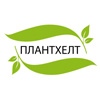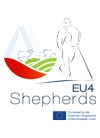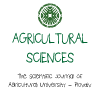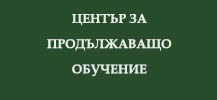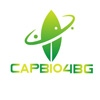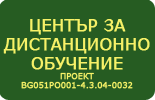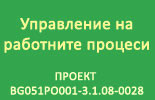Principles of animal nutrition
|
Course title: |
Principles of animal nutrition |
|
|
Course code: |
AFPAN |
|
|
ECTS: |
5 |
|
|
In-class hours |
Lectures: |
30 |
|
Laboratory work/Tutorials: |
30 |
|
|
Self-preparation hours |
Practical training: |
- |
|
Other: |
65 |
|
|
Total hours: |
125 |
|
|
Language: |
English |
|
|
Study cycle: |
Bachelor |
|
|
Semester: |
Winter |
|
|
Faculty: |
Faculty of Agronomy |
|
|
Name of the lecturer(s): |
Prof. Dimo Penkov, PhD, Dr.Sci. |
|
|
Mode of delivery: |
Face-to-face |
|
|
Prerequisites: |
Prerequisites: Animal Physiology and Biochemistry Co-requisites: mathematics, forage crop production |
|
|
Learning outcomes of the course unit: |
Object of this course is the study of basic chemical composition of the fodders, their energy and protein nutritional values for different domestic animal species and categories, and the methods of their establishment. Learning Outcomes: The students will get knowledge in: Basic chemical composition of the fodders, using different methods; Digestibility and transformation of the nutrient substances in the animal organism and methods for their establishment; Finding and calculating the different energy values of the fodders using appropriate energy systems for different animal species (GE, DE, ME, NetE); Establishment and calculation of different protein systems and their usage for the diet formulation of the main domestic animals; The role of the vitamins, minerals, trace elements, nutrient additives and their practical use in feeding of domestic animals; Establishment and calculation of different nutrient requirements for different domestic animal - and avian species and productive categories. |
|
|
Course contents: |
LECTURES – 30 hours 1.Object of the science “Animal Nutrition” - short history and development. Main abbreviations used in the course. Chemical composition of the plant and animal products. Weende - methods. Water and mineral substances and their role in animal nutrition – 2 hours 2. Crude protein. Nitrogen – content fractions. Amino acids. Required nitrogen fractions for different animals and birds – 2 hours 3. Crude fats (ether extract) – chemical composition, importance in feeding. Fatty acids. Carbo -hydrates. Crude fiber. Non Protein extract. Required quantities of fats and carbo - hydrates for different animals and birds – 2 hours 4. Van Soest – analysis. Neutral detergent fiber (NDF). Acid detergent fiber (ADF), modified ADF. Chemicellulose, cellulose, lignine. Acid detergent protein. Near – Infrared Spectroscopy – 2 hours 5.Vitamins. Vitamins A, D, E, K (definitions, classifications, functions, deficiencies, etc.). B-Vitamins, (definitions, classifications, functions, deficiencies, etc.) – 2 hours 6. Introduction to the requirements for minerals (toxic, macro, trace, and ultra trace minerals). Non-nutritive feed additives, growth promotants – 2 hours 7. Digestibility of the fodders and methods for its establishment. Direct and differentiated balance experiments. Indicator methods, in sacco - methods. Laboratory methods – 2 hours 8. Establishment of feedstuff’s digestibility in the different sectors of the digestive tract. Resorption. Establishing of the true digestibility using infusion, moving – plastic bags, and other methods. Apparent and true digestibility – metabolic nitrogen in the excreta. Digestibility of the forages – associative effect – 2 hours 9. Energy content in the fodders. Energy distribution, energy use. GE, DE, ME for different animals. Nitrogen balance – correction – 2 hours 10. Heat increment – net energy. Methods for establishing of the heat – production – animal calorimeters. Energy retention. N and C – balance, comparatively – slaughter methods, other methods. Comparison of the different methods – 2 hours 11. Energy units of the fodders. Historical energy equivalents. Energy systems, used in the world. Energy system for ruminants. Nett energy for milk - calculations Bulgarian forage units for milk – FUM – 2 hours 12. Nett energy for growth- principles of calculation. The need for differentiation of the energy systems for milking and young and male ruminants. Forage units for growth – 2 hours 13. Principles of protein nutrition. Crude protein, purify albumens, digestible protein in different parts of the digestive tract, amino acids, digestibility of the amino acids (total and in the small intestine). Methods for establishing of the protein nutrition of the fodders for monogastric animals and birds. Ideal protein conception (s) – 2 hours 14. Protein nutrition of the fodders for ruminants. Protein degradation in the rumen. Microbial protein synthesis. Digestive protein in the intestine and protein balance in the rumen – principles for calculation – 2 hours 15. Domestic animals (birds) needs for different nutrients and energy- nutrient requirements. Methods for establishing. Requirements for the different functions. Factors that determine the correct establishment of the requirements. Fodder consumption – 2 hours
LABORATORY CLASSES - 18 hours 1. Weende - methods. Preparation of samples for establishing of DM, ash, and CP. Work with drying – oven, oven and Kjeldahl Apparatus – 2 hours 2. Reading the samples. Distillation using Parnass – Wagner Apparatus. Establishing of nitrogen and crude protein – 2 hours 3. Preparation of samples for establishing of crude fiber and ether extract (crude fats). Sokslet Apparatus. Acid and hydrogen treating of the samples for crude fiber – 2 hours 4. Calculating of ether extract and crude fiber percentages. Amino acid’s establishing – demonstration – 2 hours 5. Van Soest –analysis. Sample preparation for NDF, ADF. Filtration – 2 hours 6. Establishing of NDF and ADF. Treatment for lignine – 1 hour 7. Establishing of lignine. Calculation of cellulose and hemicelluloses – 1 hour 8. Directly calorimetry – demonstration – 2 hours 9. Demonstration of establishing of macro – and trace elements (AAS) - 2 hours
PRACTICAL CLASSES – 8 hours 1. Demonstration of balance trails with birds- 2 hours 2. Calculating of digestibility coefficients, GE, DE, ME. For different animals – 2 hours 3. Calculating of FUM and FUG – 2 hours 4. Calculating of N and C – balance – 2 hours
SEMINARS - 4 hours 1. Sumerian practical requirements for feeding of different animals (discussion of the individual projects) – 2 hours 2. Continuation of (1) – 2 hours |
|
|
Recommended or required reading: |
1. Nutrition of the Animals, N. Tododrov, A. Ilchev, V. Georgieva, D. Girginov, D. Djuvinov, D. Penkov, Z. Shindarska, 2004, Con-Car - Sofia (311pp, BG) 2. Basic Animal Nutrition and feeding, W. Pod, D. Church, K. Pond, P. Shoknecht, ISBN 0471215392, last issue 2005 (previous version acceptable) 3. Feeds and Nutrition, Ensminger, M. E. J. Oldfield, W. Heinemann, 1990, Ensminger Ed., LA, 1240pp |
|
|
Planned learning activities and teaching methods: |
Lectures, presentations, briefing, tutorials Dialogue methods (conversation, discussion, brainstorming) |
|
|
Assessment methods and criteria: |
POLICIES All students are required to have read the material in advance and be present during all lectures. No credit will be given without participating in class! Two auditoriums and a research base in the Department of Animal Sciences will be used for practical trainings. The students will work on an individual basis under the supervision of the academic advisor so that the best possible learning outcomes are ensured. The seminars consist of each student’s individual 5 – 10 min presentation and a discussion. The presentation topics will be given in advance. Tests will be given in verbal and written form over the material from the seminars (student presentations) and the practical trainings (there will be 10 – minute tests before some practical trainings). If the student receives a grade under 3, the student will not be allowed to stay for the practical training. The final grade will consist of the practical final exam – 25%, the individual project – 25%, and final theory exam – 50%. If the student receives a grade of 2 in any of the first two components of the final grade, the student will not be allowed to the final theory exam and will fail the class. The final theory exam is in written form. Forms of self – training (non- auditoria’s work) Individual project- 35 hours for preparation The students receive individual assignments at the beginning of the semester. Volume of the presentation – 5-8 pages (mostly tables and figures) – 5-10 minutes presentation during the seminars (with discussion).
Format of the individual assignment: Prepare summarized requirements in a farm with a total of ….. beefs (sheep, goats, etc) from the following: - 5 dairy cows with ….. kg live weight, ….. kg daily milk – yield (middle of the lactation) and …. kg daily increasing of live weight - 3 dairy cows with ….. kg live weight, …… kg daily milk- yield (beginning of the lactation) and …. kg daily decreasing of live weight - 2 dairy cows with ….. kg live weight, …… kg daily milk- yield (beginning of the lactation) and …. kg daily increasing of live weight - …. 15-45 days old beefs - …... 120-150 day’s old female beefs with ….. kg live weight and …. Kg daily growth - …… 350 day’s old female beefs with ….. kg live weight …. and …. Kg daily growth
All young female beefs walk daily on a plain surface … km. - There are female beefs that are between 150 – 200 days old, weight …. Kg, and have daily growth of …. kg. Calculate the nutrient requirements (DM intake, Energy intake, PDI, Ca, P, NaCl, Vit. A, drinking water) for: - ground metabolism - milk yield - movement - pregnancy - daily growth, etc. -Summarize the nutrient requirements for all live and productive functions and present the results!
|
|
 - Събития по случай 80-я юбилей на АУ
- Събития по случай 80-я юбилей на АУ
